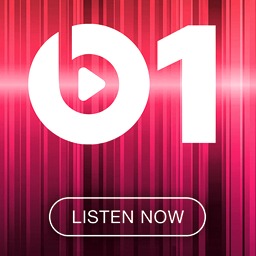Millions of people around the globe were dialed into yesterday’s anxiously awaited series of announcements from that little computer  company. But perhaps no one was more anticipatory than Bob Kernen, jācapps’ COO. Much of the activity surrounding our mobile apps company is predicated on what Apple is thinking, scheming, dreaming, and doing. So ironically, Apple’s big day yesterday had a great deal of application to the world of broadcasting. You can read Bob’s guest post below. – FJ
company. But perhaps no one was more anticipatory than Bob Kernen, jācapps’ COO. Much of the activity surrounding our mobile apps company is predicated on what Apple is thinking, scheming, dreaming, and doing. So ironically, Apple’s big day yesterday had a great deal of application to the world of broadcasting. You can read Bob’s guest post below. – FJ
I just finished watching the annual Apple Worldwide Developer Conference keynote. It’s amazing how Apple has made the pedestrian notion of a product announcement – something most companies handle with a press release and a round of media interviews – into must-see-TV.
With production values at the level of an arena rock concert, this nerd-a-palooza is an event watched by more than just your average hipster or Apple fan boy. CEO Tim Cook has stepped nicely into Steve Jobs’ shoes, and emcees with plenty of charm, if not the magician’s showmanship for which his predecessor was legendary.
Among the expected updates to the Mac OS, iOS, and now (for the first time) WatchOS, was the much-anticipated announcement of Apple Music. This new product has been in the works since the acquisition of Beats last year. And sure enough, there on stage (along with Drake and Trent Reznor) was Jimmy Iovine unveiling a new challenger for Spotify, Rhapsody, Rdio and the rest.
This isn’t a game-changer in the way that iTunes was way back in 2001 (Wow!), but as anyone who has followed Apple over the years knows, they’re less famous for inventing than they are for perfecting. Apple didn’t invent the personal computer, or the mp3 player, or the laptop, or the smartwatch, or the tablet, or the smartwatch. But they sure know how to build a better mousetrap.
This new service is more than a personalized cloud jukebox like its competitors features, and one of the things Apple will rely on to differentiate themselves in this very crowded space isn’t silicon-based, but rather carbon-based: people.
 At the center of the new service are the kinds of professional curators that have largely been dis-intermediated since the emergence of Pandora and its algorithm. First and foremost is Beats1, a “global 24-hour radio station” (yes, they used the word radio) that brings together a number of top DJs from around the world, creating live (yes, live) linear music.
At the center of the new service are the kinds of professional curators that have largely been dis-intermediated since the emergence of Pandora and its algorithm. First and foremost is Beats1, a “global 24-hour radio station” (yes, they used the word radio) that brings together a number of top DJs from around the world, creating live (yes, live) linear music.
There are also human curated playlists. These are not unlike the user-created ones on the other services, but part of the value proposition here is that these collections of songs are crafted by people who know music, and who have credentials and credibility beyond mere fandom. It’s called programming.
And finally, Apple Music is offering Connect, a way for artists to reach out directly to their fans, providing users social interaction, exclusive content and a glimpse inside their everyday lives.
Apple is acknowledging that there is more to the relationship people have with music than can be addressed by a mere machine. They are listening to a growing number of music fans who may not be prepared to reject the algorithm, but are ready to acknowledge that music has always been about human interaction.
Spotify’s recent integration of podcasts – spoken word content – is yet another indication that pure-plays and playlist services cannot survive with music alone. This is something that has been clear to the Jacobs Media side of our offices for many years now. It is fascinating to see this reality now being affirmed by the globe’s biggest media and technology companies.
Like John Connor, this is a message from the future that those carbon-based lifeforms who talk into microphones, differentiate your stations, program special and feature programming, and play your music selections are not going to be obsolete any time soon.
In many ways, these modern digital media services are acknowledging the value and efficacy of old school radio. Now it’s essential that broadcasters hear that same message about the values and attributes that got FM radio to the dance decades ago.
There has never been a more important time to invest in great people, on and off the air, and yes, behind the scenes. It is essential for radio to empower its programmers and air talent to make that connection between stations and those other carbon-based lifeforms – listeners.
- What To Do If Your Radio Station Goes Through A Midlife Crisis - April 25, 2025
- A 2020 Lesson?It Could All Be Gone In A Flash - April 24, 2025
- How AI Can Give Radio Personalities More…PERSONALITY - April 23, 2025




This is fascinating. Apple seems to realize that its not Spotify that needs perfecting, it’s RADIO. There isn’t much you can do to make songs on demand and on self generated playlists better. But in the area of syndicated talent, there’s room for a lot of improvement.
Apple has the advantage of not having language restrictions and my guess is they won’t come close to approximating radio’s spot load. These folks have a long history of knowing what people want and a virtually unlimited research budget. And they’re light years ahead of radio in all areas of social media.
The big radio companies should be worried, but more to the point they should do something. Do some real research into how their listeners say they’ll react to the new Apple product and how it might impact their listening habits. And figure out how they can blunt the differentiation before it takes hold.
“We need to get out and tell our story better!”
ARGH!!!
Bob, it is affirmation that radio’s content model (sans the spotload perhaps) is a good one. But it’s also a shot across many bows. Maybe a bazooka shot. Thanks for the comment…and the angst.
By the same token, The Sonny and Cher show affirms TV’s content model
True that. Not much Netflix action there.